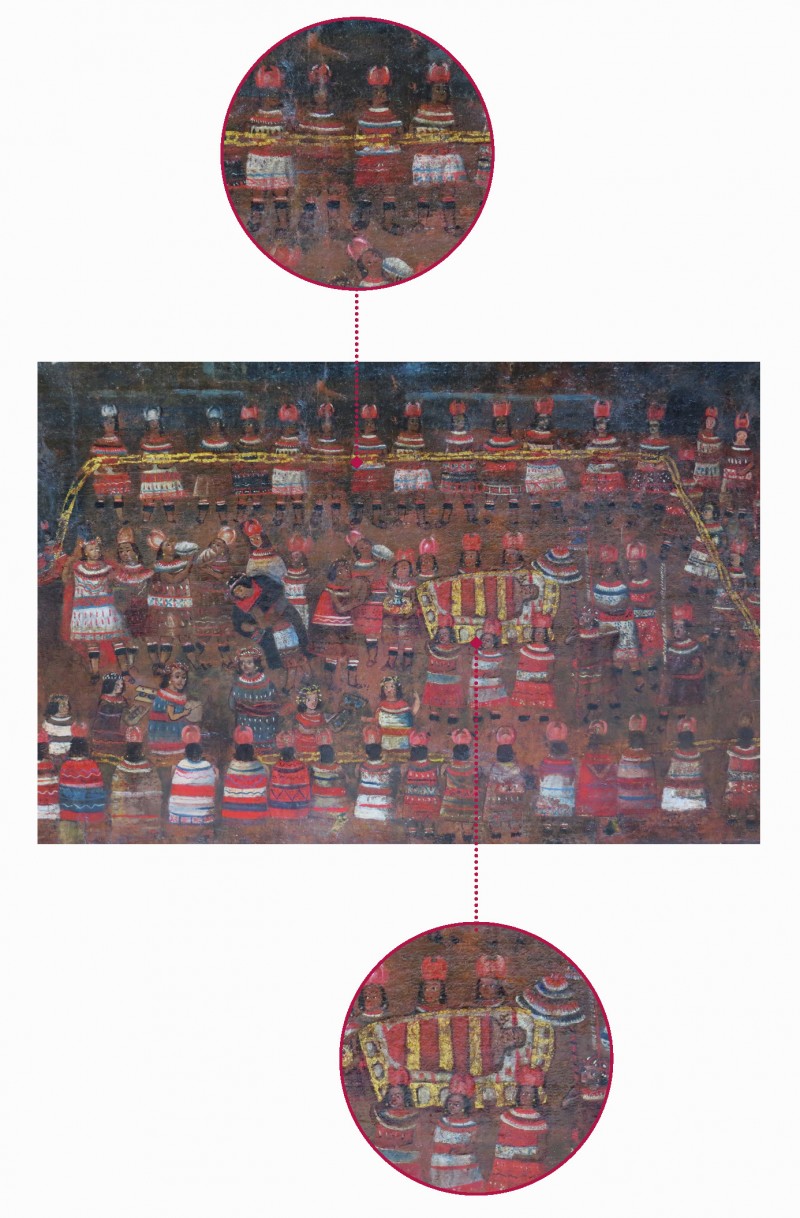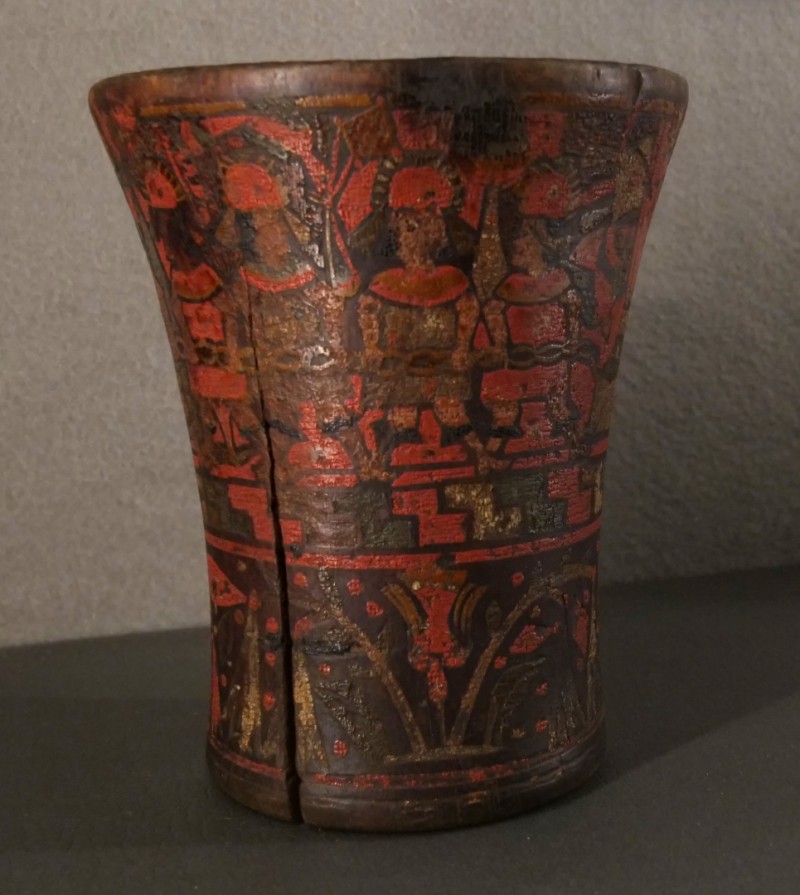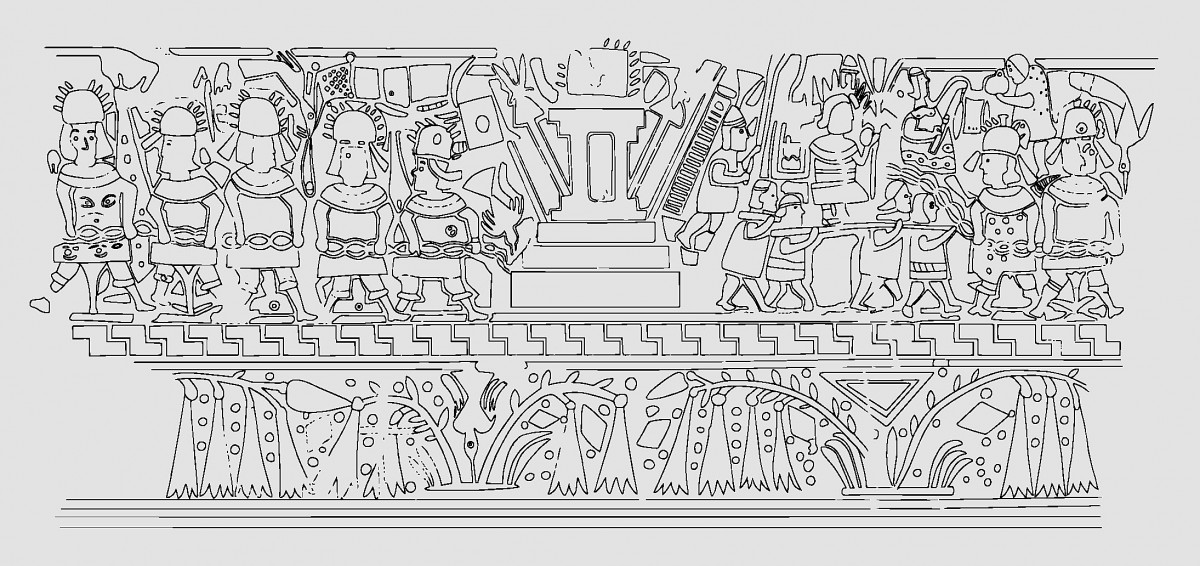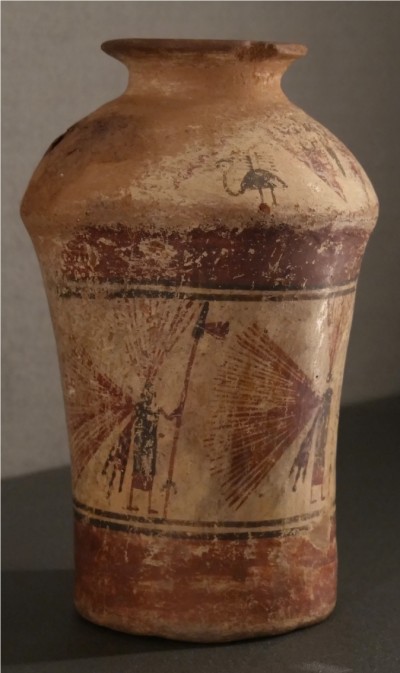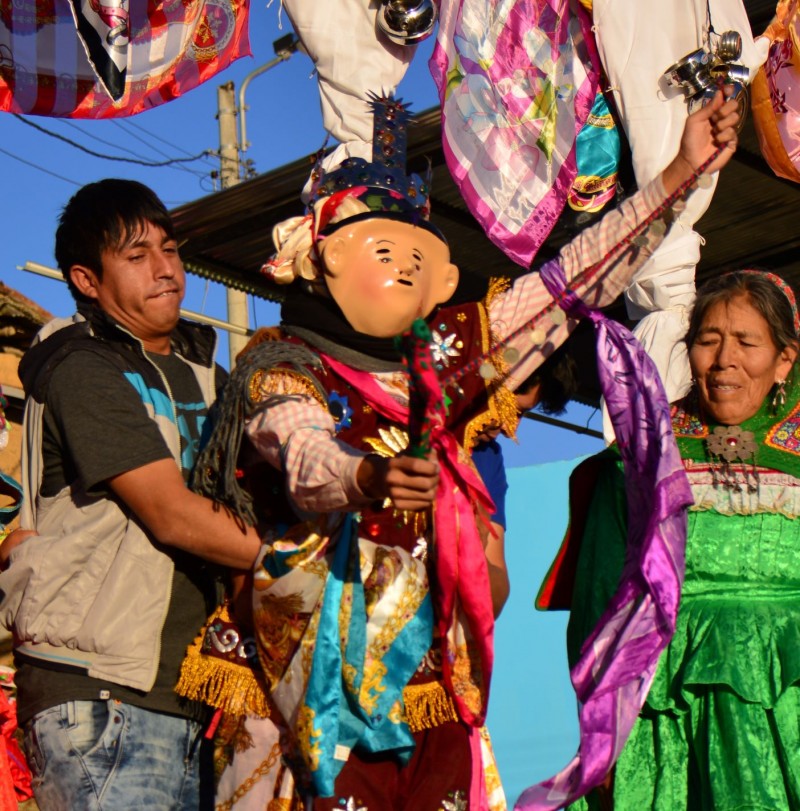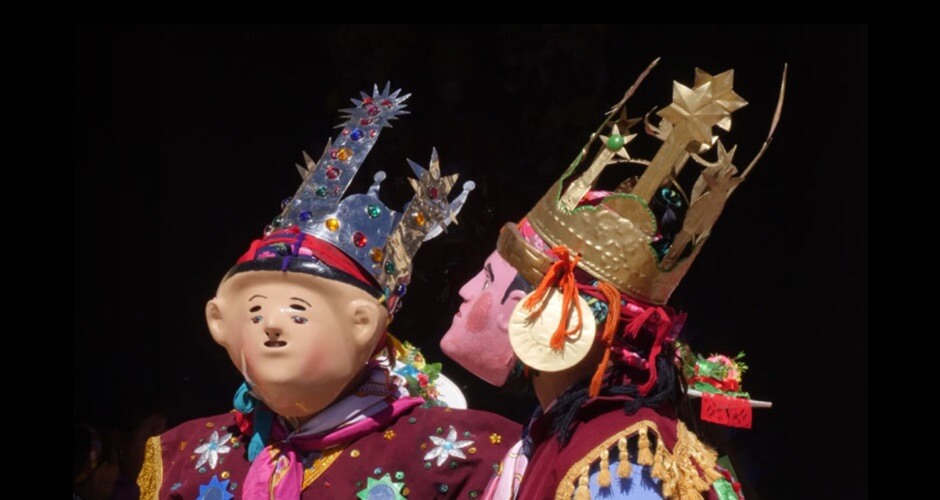The Festival of The Images in The Andes
Remembering the Inkas
In Tawantinsuyu, dance and music were all used to tell stories about the rulers. One of these stories is told on the painted and wooden cup shown here. It tells of when the ruler Waina Capac had an enormous, beautiful golden chain made to commemorate the birth of his son, Waskar, who would become one of the last rulers of Tawantinsuyu.
As dance and music are forms of communication that do not require spoken language to comprehend, their message could be understood by people who spoke many different languages.
The History of the Inka was transmitted through objects, songs and dances. Cups and textiles were given as gifts when Inka authorities entered into alliances with other nations and groups and incorporated them into Tawantinsuyu, the Inka State. Before the gift giving, the guests ate and drank together, and in major ceremonies and rituals those present also told stories, danced, and sang the history of the Cuzco rulers and the expansion of its empire, so the conquered societies would learn about it. Even today, stories are danced and sung about such historic events as the Spanish arrival and the death of the Inka Atawallpa.





































